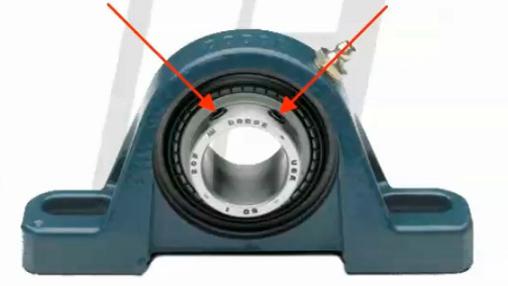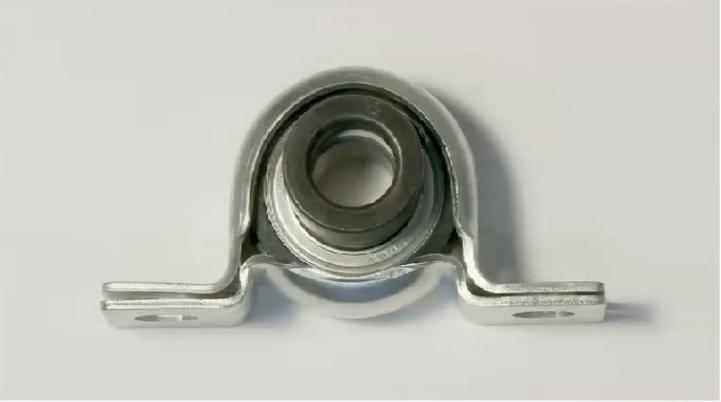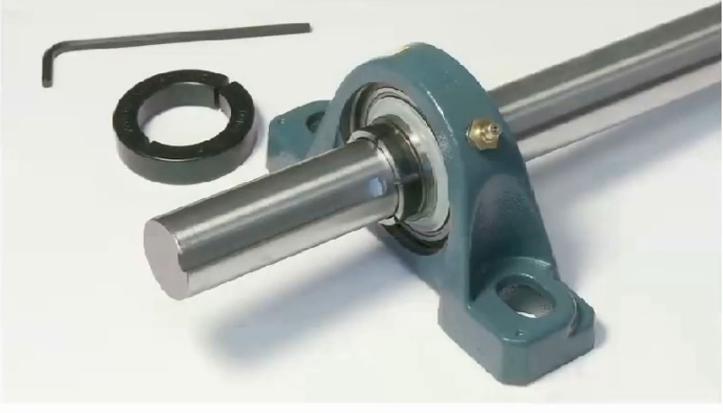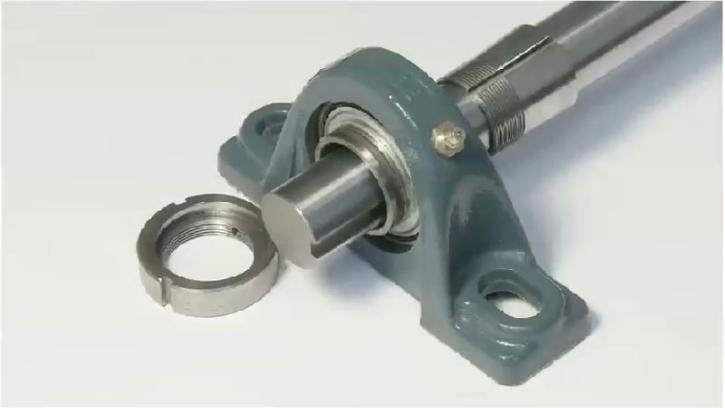Mounting or locking systems are used to attach the bearing cartridge to the shaft. They increase holding power, reduce vibration and, improve fan serviceability. There are four different bearing locking types in the HVAC industry. They are set screw, eccentric locking collar, concentric locking collar and tapered adapter sleeve.
The set screw is the most basic. It is used to lock the inner bearing to the shaft.

Next is the eccentric locking collar. Rotation of the collar forces the shaft and bearing to lock together by friction. Looking closer, you can see the outer circle is offset from the bore. As it turns, it pushes the shaft in the opposite direction. With the set screw and eccentric locking collar types, the pressure forces the shaft to one side of the race.

Another collar type is the concentric locking collar. It acts as a clamp around the split inner race to lock the bearing onto the shaft concentrically. Concentric means the shaft is centered in the race and it has the same pressures all the way round similar to a hole’s clamp.

The last locking type is the tapered adapter sleeve. It is generally used for higher speed fans and is mounted by an inner tapered sleeve. The inner sleeve is split, allowing it to squeeze down onto the shaft as the tapered bearing inner ring is forced onto the sleeve. This removes all the clearance between the shaft and the bearing bore while centering the shaft in the bearing race.

The design of high speed air handling applications requires special construction and tight quality control to meet the system’s rigorous demands. High speed bearing function requires air handling quality specifications for reduced swivel torque, noise and vibration testing and bore size verification.
Swivel torque in the HVAC industry means the force required to swivel the bearing cartridge inside the housing, which helps align the shaft and bearing. Reduced swivel torque allows self-alignment of the bearing to the shaft. This is essential in preventing vibration, noise and damage to the bearing components.
A low swivel torque enables the outer race of the bearing to pivot or swivel inside the housing, allowing the bearing to easily self-align on the shaft. If the bearing fits too tightly in the housing, it will not align and may cause problems for the operation in the unit.
PREVIOUS: Fan bearings (1)
NEXT: Fan bearings (3)